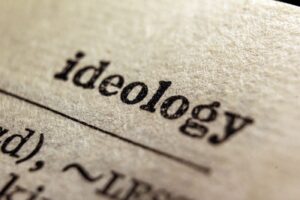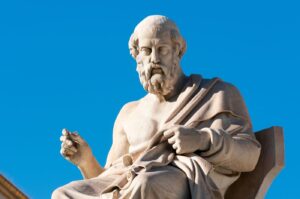The loudest voices in our national debates about political economy tend to be libertarians and social welfare statists. To our detriment, most public policy discussions are filtered through these two lenses. At the same time, we tend to conflate the policy issues facing our nation as if they were one and the same.
But consider the range of America’s political-economic challenges: How to balance our budget; how to reform the major entitlements of Social Security, Medicare, and Medicaid; how to get the economy growing again; how to increase employment; how to increase social mobility; how to help the poor.
Though related, these issues are profitably examined one at a time. Poverty, for example, is undoubtedly linked to our debates about government regulation, taxes, and budgets. It is certainly tied to our debates about income inequality, social mobility, and unemployment. But poverty in America is not primarily about any of these issues. And political commentators of all stripes perform a major disservice when they mesh them together.
Thankfully, Lawrence Mead knows this, and has been instructing all who will listen on issues of poverty and policy for the past thirty years. A professor of politics and public policy at NYU, Mead was the intellectual driving force behind the welfare reform act of 1996. His latest work, From Prophecy to Charity: How to Help the Poor, is a concise statement of a lifetime of scholarship. It is a wonderful book that covers the causes of poverty, how we measure it, who the poor are, how government has tried to help, where it’s gone wrong and where it’s succeeded, and how competing ideologies have hindered or helped real policy reform. Though the book is short, it contains a wealth of information and wisdom. (The volume appears in the AEI Values and Capitalism series; I discussed another title in that series, Wealth and Justice, here.)
The critical questions for Mead are these: What do the poor really need? How can we effectively meet that need? Money comes second to what Mead argues the poor truly deserve: a lifestyle transformation. “Progress against poverty,” he insists, “requires programs with the capacity to redirect lives, not just transfer resources.” In reaching that goal, he adds, “recent conservative policies are more effective than what came before, and it would be a mistake to abandon them.”
Start your day with Public Discourse
Sign up and get our daily essays sent straight to your inbox.Mead self-consciously argues against those who “have contended that the poor are entitled to aid regardless of lifestyle or, alternatively, that they should get nothing at all from government.” He appeals instead to Biblical wisdom, where our duties to the poor are based “not on abstractions such as rights, freedom, or equality but on restoring community.” The key, then, is to promote “right relationships”—with spouses, children, employers, and the broader community. To do this, Mead thinks, we need to understand better the causes of poverty.
While government measurements of poverty focus on economic factors, Mead stresses that behavioral dimensions play a larger causal role. Poverty would be simple to fix if it were just about economic need: then we would only have to give more money. But the long-term poor today are unlike the working poor of yesteryear. In an affluent society like ours, Mead argues, “poverty is not usually forced on people for very long by conditions.” Rather, “most have become poor, at least in part, due to not working, having children outside marriage, abusing drugs, or breaking the law.” Simply doling out more money does not counter these underlying causes of poverty, which call for behavior changes that encourage law-abiding, productive lives.
The World Bank classifies moderate poverty as living on less than $2 a day. By that standard, the U.S. has virtually no poverty. In the 1960s, our government’s official measure was set at three times the cost of a minimal food budget, which, adjusted for inflation, came to $17,285 in 2009 for a family of three (consisting of one parent and two children). Given this standard, the official poverty rate was 13.2 percent in 2008 and 14.3 percent in 2009. While these figures note anyone who fell beneath the poverty line in a given year, Mead asks us to focus on those who remain poor for multiple years, not those who hit a temporary rough patch. This long-term group includes 6 to 7 percent of the American population. And while the young, disabled, and elderly used to make up their majority, Mead notes that now they are outnumbered by healthy working-aged people.
Why are people in the prime of their lives poor? Mead argues that “poor families typically arise when parents have children without marrying and then do not work regularly to support them.” This pattern provokes a vicious cycle: children reared in these circumstances grow up to be poor themselves because they are more likely to drop out of school, get involved in crime and drugs, become sexually active at a young age, and never learn the value of an honest day’s work. “By these routes,” he says, “women end up early as single mothers on welfare while men go to prison. … Despite having children, neither men nor women usually attempt to marry or work regularly. That is the immediate reason they usually become poor.” If one graduates from high school, gets a job, marries, and then has kids—in that order—there is very little chance of falling into poverty.
Mead responds to a host of competing arguments about poverty, noting that “poverty is caused mostly by low working hours, not low wages.” Good middle-class jobs may be hard to find right now, but there are ample low-skilled jobs available: “In 2009, only 12 percent of poor adults who did not work blamed this on their inability to find work. In 2007, before the recession, the figure was only 5 percent.” These jobs, Mead insists, “are still sufficient to avoid poverty and welfare for most families.” Our recent economic downturn isn’t to blame, for “in good times and bad, most poor adults are not even in the labor force, so the recession little affects them.” (In fact, the recession has mainly hit the middle class, and, Mead helpfully reminds us, “inequality and poverty are largely separate problems.”) While he has a lot to say about employment, Mead has less to say about causes of and responses to the erosion of marriage, where 40 percent of all Americans are born out of wedlock, including 71 percent of blacks.
The welfare reforms of the 1990s worked precisely because they addressed both material and behavioral causes of poverty. While critics argue that welfare reform consisted of budget cuts, Mead notes that after the reform more money was spent helping the poor, not less. But the money came with strings attached—recipients had to work. According to Mead, “Most experts opposed reform, believing that few poor could work, given the barriers they faced. But most welfare mothers successfully left the rolls for jobs, with most of the leavers emerging better off.” This confirmed Mead’s central insight that cultural (and political) expectations, not economic barriers, prevented employment. Mead admits that low-skilled workers do not have an easy life, but he insists that working makes for a better life than not. And how to get people working is a separate question from how to get them moving up once in the job force.
Mead’s arguments partly counter some of those made by Charles Murray. While Murray focused on the rewards (and hence incentives) for bad behavior that welfare provisions provide, Mead argues that “the seriously poor are less calculating than economists suppose. If they were economically rational, they would never have engaged in the patterns that made most of them poor.” And yet, the way in which welfare was provided did keep people from working. So, while research has “not shown that social problems like nonemployment or unwed pregnancy result chiefly from the economic incentives set up by welfare,” he writes, “It is indeed true that liberal social programs have been counterproductive, but that is chiefly because they are permissive, giving no clear guidance about how recipients ought to behave.”
While the first wave of welfare reform largely affected poor women—mothers with children receiving aid—a second round of welfare reform, Mead argues, should find effective programs that put nonworking men into the workforce, and establish better academic and moral standards in schools. Mead unabashedly says that education and welfare need more paternalism. This paternalism is bemoaned by many for being judgmental (not being “value-free”), but this is precisely what Mead thinks the poor need. And what we owe them. Mead argues that the most effective welfare programs administered by the states “all set clearer rules for client behavior and back them up with oversight. Evaluations confirm that paternalistic programs generally perform better than nondirective ones.” Religious and other non-governmental partnerships can play an important role in this, Mead suggests.
While From Prophecy to Charity has certain limitations, it should be read by anyone who cares about government policy that helps the poor. I would like to have seen more discussion about prudential concerns: how to counter government-provided welfare’s crowding out effect on private charity, how to best structure government partnerships, and what is entailed by a precedent of attaching moral strings to welfare when government is run by the morally corrupt.
Mead’s discussion of competing perspectives on welfare also leaves much to be desired, as it consists largely of his own idiosyncratic interpretation of a handful of Biblical passages, and, in justified frustration with religious voices who have opposed welfare reform, he overstates his case against them and too quickly dismisses important voices. He is correct to say that a major problem with the prophetic tradition is its scarcity of guidance for what the rich can effectively do to help the poor, and of requirements for the poor themselves.
As I see it, the two dominant political philosophies of our day are forms of liberalism, but neither deserves the title nor lives up to the merit of classical liberalism. Neither the Right’s form of libertarian liberalism nor the Left’s form of social welfare liberalism (both of which show strong streaks of lifestyle liberalism) can adequately form the basis of a governing philosophy, especially when it comes to the plight of the poor.
The libertarian argues that the sole purpose of government is the protection of rights, and that the only real rights are negative rights—freedom from force, fraud, and harm, whether perpetrated by other individuals or by governments. Taxing the non-poor in order to assist the poor is robbery, a violation of property rights, and itself a form of injustice. Provided they do no harm to others, individuals should be free to live life as they please, the libertarian argues, even if this means ignoring the plight of the poor. Market forces and private charities, if left free from state interference, will sufficiently succor the needy.
The welfare state liberal champions a conception of government where every citizen solely in virtue of his humanity has rights to adequate material resources necessary for a dignified life. Whether it be John Rawls’s “primary goods” or Martha Nussbaum’s “central capacities,” the state is supposed to equip people with a fair share of what they need in life—but it isn’t to influence how they use that share, nor to place moral conditions on how they receive it. At the heart is a positive right to materials coupled with a negative right from influence.
A sound political philosophy would hold that the state should be concerned about the welfare of all people. This means that our obligation to the poor has to be tied to their well-being, and thus necessarily connected to influencing their behavior. This is best understood not in terms of rights—whether positive ones to welfare or negative ones of noninterference—but in terms of promoting their good, with its material and moral components. In essence, any legitimate care for the poor has to be paternalistic. It has to teach true moral values: that one needs to be educated, that one needs to work, that one needs to marry before having children, that one needs to respect the law.
Classical liberal political philosophers understood this, because they knew that protecting natural rights also entailed promoting what Michael Zuckert has called a “natural rights infrastructure.” This can’t simply be a physical infrastructure of highways and courthouses, but a moral and behavioral infrastructure as well. An earlier political philosophy simply termed this infrastructure the common good. Promoting this necessarily forces us into discussions about human well-being and the moral norms that should govern our behavior. Sound guidance on this is what we owe everyone, poor and rich alike.









